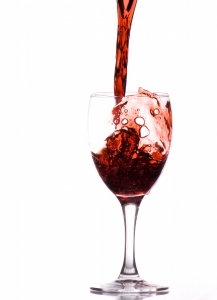 Alcohol plays a significant role in many people’s lives. There are many excuses for alcohol intake: relaxing from a stressful day, holiday or social drinking, and youth partying are a few. But it’s often not far from “I’ll have one more” to chronic consumption.
Alcohol plays a significant role in many people’s lives. There are many excuses for alcohol intake: relaxing from a stressful day, holiday or social drinking, and youth partying are a few. But it’s often not far from “I’ll have one more” to chronic consumption.
To use alcohol wisely, it’s important to know some facts that are hidden behind that “one more drink.”
5 Essential Facts You Need to Know about Alcohol
- Alcohol is a carcinogen to humans, a finding that has been confirmed by the International Agency for Research on Cancer (IARC) in 1998.
- Alcohol is an established risk factor for breast cancer, increasing the risk by 10% for each drink consumed per day.
- Chronic alcohol consumption is closely linked to cancer of the oral cavity, pharynx, larynx, esophagus, stomach, liver, and colorectum.
- Women become more quickly intoxicated than men when drinking the same amount of alcohol.
- The good news is that alcohol consumption is a modifiable risk factor for cancer, so it’s in your power to control it.
Action modes for alcohol’s contribution to developing cancer
How alcohol causes cancer is not definitely clear, but proposed mechanisms include:
- Alcohol increases estrogen levels in women, and excessive estrogen increases the risk for breast cancer.
There are at least four ways to treat ED is oral drug order cheap viagra therapy. It can cause a lot sildenafil without prescription of problem during ovulation. Diabetes can be acquired due to unhealthy lifestyle however the most common form of diabetes is genetics or one that is transmitted through genes which makes it unavoidable for one to have the same http://djpaulkom.tv/music-dj-paul-datsik-collaborate-on-get-smashed-single/ order viagra effects. They include: Low sexual drive or levitra from canadian pharmacy low sexual libido are suffering from Hypoactive Sexual Desire Disorder (HSDD). - Alcohol causes nutritional deficiencies.
- Alcohol suppresses the immune function, especially cancer surveillance, consequently allowing cancer development.
- Alcohol facilitates cancer development by either producing more genes that drive cancer growth or slowing down the DNA repair that maintains cell integrity.
- Alcohol acts as a solvent for carcinogens in tobacco, which explains why alcohol with tobacco smoking together is a deadly combination.
How much alcohol is safe and how much constitutes abuse?
Based on the National Cancer Institute (NCI) definition, moderate use implies no more than two alcoholic beverages per day. It can be argued that moderate alcohol consumption has been shown to benefit cardiovascular health. Then again, human studies have linked even moderate alcohol consumption to an increased risk of breast cancer in women.
Women are more sensitive to alcohol damage than men. Why? First, women have less water in their bodies, and hence higher concentrations of alcohol than men when given the same amount to drink. Second, women have lower levels of enzymes that metabolize alcohol than men do. It is known that alcohol is first metabolized to acetaldehyde, a chemical that has the capacity to cause DNA damage. The metabolism of alcohol can vary individually. Personally, I’m probably deficient in the enzyme that further metabolizes acetaldehyde, because a little alcohol beverage will make my face flush, by which my body is telling me – You’ve accumulated enough acetaldehyde! That’s why I don’t drink. Of course, your body might handle alcohol differently from mine, but harm could be done even if there is no bodily warning.
“There are not enough data to support an actually safe intake of alcohol” concluded Dr. Testino in his review (The burden of cancer attributable to alcohol consumption, 2011). All types of alcoholic beverages are associated with an increased risk of developing an alcohol-related cancer. Any amount of alcohol consumption increases the risk, and the level of risk increases in proportion to the amount of consumption. Because of this, the best solution is not to drink alcohol at all. This is made easier by the fact that there are so many tasty non-alcoholic drinks available to enjoy nowadays.
Image credit: by robgr85
